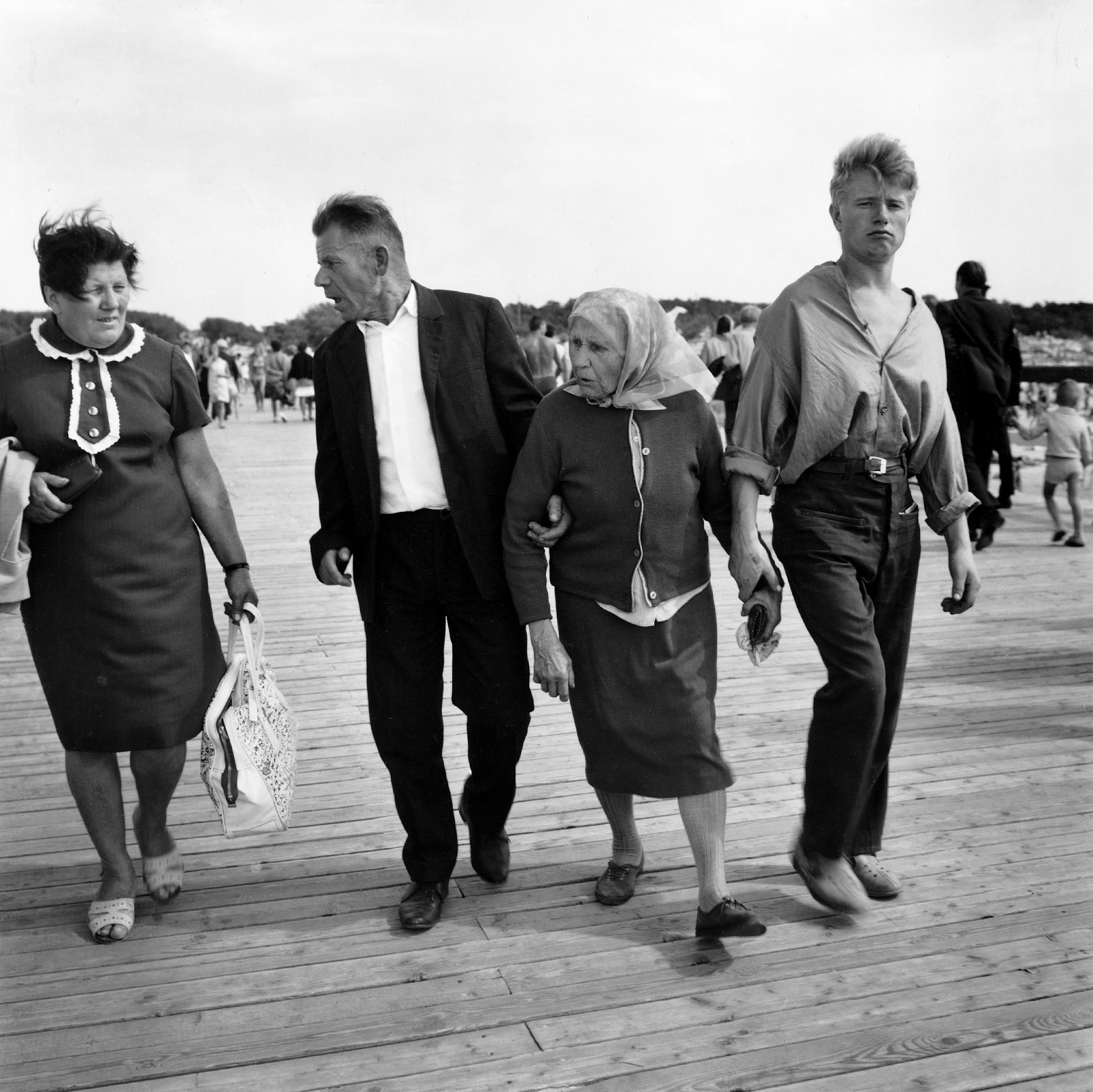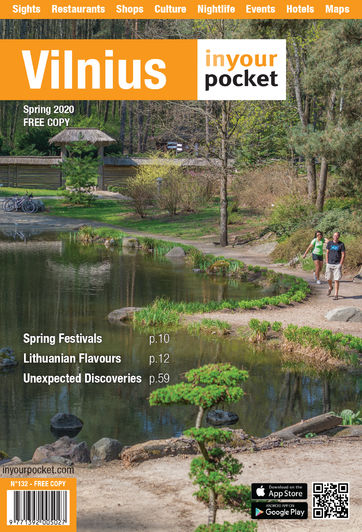Antanas Sutkus, a journalist in his late twenties who had grown tired of the all-powerful Soviet censors, turned instead to black-and-white photography to express himself. A life-changing moment came in 1965 with the arrival of the exalted writers Jean-Paul Sartre and Simone de Beauvoir – the Bogart and Bacall of existentialism – who were curious to experience a slice of Soviet life. A group of local writers, artists and scientists were chosen to accompany the great couple to the desolately beautiful (and empirically symbolic) landscape of towering, cascading dunes in Nida on Lithuania’s coastline. The meeting with Sartre and the images Sutkus took of the couple on that day, leaning into the wind as they stalked the sand, marked the beginning of something completely new – a deeply humanist strain of documentary photography utterly unlike anything else that emerged from Central and Eastern Europe.

Money for art
Together with a group of likeminded photographers, Sutkus founded the Art Photographers’ Society (later ‘union’, now ‘association’) in 1969. It allowed members to bide their time with their art, often spending years on a single theme, cycle or series – among other projects – as it gave them access to labs and presented them with money to print photos for their exhibitions. Photography books were popular, some selling as many as 200,000 copies, generating more cash to help the artists to create.
The notoriously strict Soviet authorities were completely not out of the picture, however. Sutkus spent a great deal of time meeting them, representing the society, explaining the works and negotiating rights and privileges. Fortunately he had a talent for it. He understood what photographers needed as he was one of them.
The photographers were mostly young men full of creative energy. Key among them was Aleksandras Macijauskas, who later led the society in Kaunas and whose wide-angle shots of farmers and markets and beasts both living and dead were lively and provocative. Then there was Romualdas Rakauskas, who shot a more romantic rustic Lithuania with spring blossoms, young people, music, play and dance.
Algimantas Kunčius was more brooding, observing groups of people from a distance, also capturing broad landscapes and cloud formations. Romualdad Požerskis photographed a wide range of themes, from religious festivities to bikers to old people’s homes. Jonas Kalvelis was fixated on the abstract textures and shapes of dunes and trees. And Vilius Jasinevičius is famous for his images of the 13 January 1991 events and the struggle to regain independence.
All of them photographed exclusively in black-and-white, creating astonishing and memorable images. As they worked through the seventies and eighties and into the abruptly cash-strapped early nineties, they and others created a strong movement of humanistic photography that was way beyond the dictated norms of social realism.
Legendary meetings
A tradition began in the early seventies to meet each September in Nida – a remote and visually uniquely inspiring part of the country that required special permission to visit as it was the Soviet border, full of fences, with tractors raking the beaches so they could be inspected afterwards for footsteps. Yet these legendary meetings, discussions, exhibitions and parties were free of restrictions. The politics was kept to a minimum. Attendees fed off the energy of each other. The Nida ‘symposium’ – it refuses to be called a ‘festival’ – is still going strong today.
Inevitably, independence brought change, exposure to global trends and an end to Lithuania’s humanist photography movement. Young artists questioned the traditions of the past. The state funding system changed, where suddenly you had to defend the importance of your work to get grants. A wider variety of books were published, not just by known artists, and sales channels changed from state orders to chain bookshops where market rules apply.
You can still find books on artists past and present. A good place to start is the Prospekto Gallery at Gedimino 43, also home to the society’s successor the Lithuanian Art Photographer’s Association. Besides exhibitions the space sells a smattering of books, such as the brilliant biannual and bilingual (Lithuanian and English) Lietuvos fotografija. There’s also a smaller, older gallery in the Old Town called the Vilnius Photography Gallery (Stiklių 4, entrance from Didžioji) and Kaunas has an excellent photography gallery at Vilniaus 2.





Comments